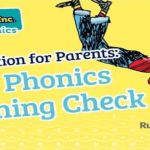Assessment
- Through effective questioning, observations and dialogue, teachers make ongoing assessments about each child. Through making these assessments, teachers are better informed to adapt their curriculum planning and teaching accordingly.
- Assessments are based on what the pupils need to know and remember by the end of each learning journey (see knowledge organisers) and by the end of each year group and phase.
- Pupils knowing what they are expected to learn and, more importantly, why.
- Pupils are partners in the learning process. Teachers use a range of low stake assessment opportunities and pre/post assessment tasks so that they get a good understating about where pupils are at in their learning journey, where they need to go next and what they need to do to get there.
- The ‘success criteria’ is discussed and shared with the pupils during each lesson, work is then assessed against the success criteria.
- Three-way feedback, pupil, peer, teacher with clearly identified next steps – this can be written or verbal feedback.
- Regular pupils’ work scrutiny
In addition to the above we have three ‘formal’ assessment points or ‘data checkpoints’ in the year. These take place at the end of each term. We use Cornerstone tests for English and Mathematics, as these provide us with a standardised score and detailed gap analysis to tell us how much progress your child is making and if they are on track to meet National Curriculum expectations for their age range. The tests also inform our next steps in teaching and also in making our termly teacher judgments. Writing is assessed through making a teacher judgement. All judgments are entered into our data analysis system- Sims.
A pupil’s reading ability is ‘Benchmarked’ termly to ensure a good match of reading book to ability. Lower down the school we use Read Write Inc assessments to ensure the right book is matched to the reading ability.
Statutory Assessments (End of Key Stage)
In addition to the above assessments, pupils also complete the following statutory assessments:
- Reception – Baseline, EYFS profile
- Year 1 (and 2) – Phonics Check
- Year 4 – Multiplication tables check
- Years 2 and 6 – end of key stage assessments
Please see the separate tabs for more information on these.
Early Years – Nursery & Reception
Class teachers will use a combination of the EYFS profile and a baseline assessment to measure progress.
Baseline:
- The baseline assessment will result in a score that forms part of each pupil’s baseline profile. By having a good understanding of their abilities when they start school, class teachers are able to measure each child’s progress and plan for the next steps in learning.
- The baseline assessment is face-to-face with a variation of tasks and observational checklists.
EYFS Profile:
- The EYFS profile assessment is carried out in the final term of Reception
- The main purpose of the EYFS profile is to provide a reliable, valid and accurate assessment of individual children at the end of the EYFS.
EYFS profile data is used to:
- Inform parents about their child’s development against the early learning goals (ELGs) and the characteristics of their learning.
- Help year 1 teachers plan an effective, responsive and appropriate curriculum that will meet the needs of each pupil.
Pupils in Nursery and Reception are assessed against the Prime and Specific areas of Learning in the EYFS profile/ Assessments are based on observation of daily activities and events. At the end of Reception for each Early Learning Goal, teachers will judge whether a child is meeting the level of development expected at the end of the reception year:
- Emerging, not yet reached the expected level of development (Below)
- Expected (inline)
Key Stage 1 SATs
Key Stage 1 SATs are tests which are administered in year 2.
SATS is the acronym for Standard Assessment Tests, or they are sometimes called National Curriculum Tests.
Who takes SATS?
SATS are administered at the end of Year 2 and then at the end of Year 6. At the end of Year 2 pupils are tested on the Maths and English syllabus for Key Stage One so these are called KS1 SATs. The final judgment made for your child is a teacher judgment. This means the teacher will use the tests and evidence on how your child has been working to make an overall judgment. Please see below the parent information booklet and video to get a better understanding.
Key Stage 2 SATs
Key Stage 2 SATs are tests which are administered in year 6.
SATS is the acronym for Standard Assessment Tests, or they are sometimes called National Curriculum Tests.
Who takes SATS?
SATS are taken at the end of Year 2 and then at the end of Year 6. At the end of Year 6 pupils are tested on the Maths and English syllabus. Please see below the parent information booklet and video to get a better understanding.
SATs Parent Information Booklet
KS2 SATs Timetable
Please see the table below for SATs information for parents regarding the KS2 SATs tests that will take place from Tuesday 9th May 2023 to Friday 12th May 2023.
Useful websites
These websites can help support your child and develop your understanding too
| My mini maths |
| Videos to support maths |
| Grammarsaurus |
| Songs to learn key grammar concepts |
| BBC revisewise |
Times tables Year 4 Multiplication
Primary-school children are expected to know all their times tables up to 12×12. Under the current National Curriculum, children are supposed to know their times tables by the end of Year 4, but they are not formally tested on them other than through multiplication questions in the Year 6 maths SATs.
Multiplication Check Information Booklet
Why has the test been put in place?
The DfE says that the check is part of a new focus on mastering numeracy, giving pupils the skills and knowledge, they need for secondary school and beyond. The purpose of the MTC is to determine whether Y4 pupils can recall their multiplication tables fluently (being able to answer times tables questions accurately and quickly, without having to work out the answers).
How will children be tested?
Children will be tested using an on-screen check (on a computer or a tablet), where they will have to answer multiplication questions against the clock.
Children will have 6 seconds to answer each question in a series of 25. Each question will be worth one mark and be presented to the child in this format:
8 x 7= ____
Questions will be selected from the 121 number facts that make up the multiplication tables from 2 to 12, with a particular focus on the 6, 7, 8, 9 and 12 times tables as they are considered to be the most challenging. Each question will only appear once in any 25-question series, and children won’t be asked to answer reversals of a question as part of the check (so if they’ve already answered 3 x 4 they won’t be asked about 4 x 3).
Once the child has inputted their answer on the computer / device they are using, there will be a three-second pause before the next question appears. Children will be given the opportunity to practise answering questions in this format before the official check begins.
The six-second time limit per question has been decided on by the DfE because it should allow children enough time to demonstrate their recall of times tables without giving them the time to work out the answers to each question.
How will the results be reported?
Pupils’ individual results will be made available to schools, and the Department for Education will report national results to track how they change over time. Schools will be required to report the results to parents or carers.
What happens if my child does not score very highly on the test?
There will be no “pass mark” (expected standard threshold) and no child will “fail” the test. Multiplication facts will be the only things tested (there will be no testing of children’s knowledge of division facts or problem-solving in the check).
The DfE says the purpose of the check is to help teachers identify which children are falling behind and target areas where they’re not being given a chance to succeed.
How can I help my child:
Times tables are learnt best when learnt regularly and in short bursts. At Khalsa Primary School we use Timetables Rock Stars as an online platform to support your child to learn their times tables. Your child will already have their login details.
Please use the link below for some great ideas.
https://www.timestables.co.uk/
https://www.topmarks.co.uk/maths-games/hit-the-button
https://www.oxfordowl.co.uk/for-home/maths/times-tables-tips/
Phonics Screening Check
“The Year 1 phonics screening check is not a formal test, but a way for teachers to ensure that children are making sufficient progress with their phonics skills to read words and that they are on track to become fluent readers who can enjoy reading for pleasure and for learning.”
- The Phonics Screening Check demonstrates how well pupils can use the phonics skills they have learned up to the end of Year 1, and to identify those who need extra phonics help.
- The checks consist of 40 words and non-words that your child will be asked to read one-on-one with a teacher. Non-words (or nonsense words, or pseudo words) are a collection of letters that will follow phonics rules your child has been taught, but don’t mean anything.
- The 40 words and non-words are divided into two sections – one with simple word structures of three or four letters, and one with more complex word structures of five or six letters.
- Pupils will be scored against a national standard, and the main result will be whether they fall below, within or above this standard
- Pupils who do not meet the required standard in Year 1 will be re-checked in Year 2.
Parent video: The Phonics Screening Check

Yr1 Phonics Screening Check Information for Parents
Useful Websites
Alphablocks – lots of videos and games to help with recognising letters and reading.
www.bbc.co.uk/cbeebies/shows/alphablocks
Phonics Games – A variety of different interactive games
www.ictgames.com/mobilePage/forestPhonics/index.html
Letters and sounds initial sound game- this game lets your child reveal a sound/letter and then try to find the picture that starts with the same sound. www.letters-and-sounds.com/phase-3-games.html
BBC Bitesize – this game allows your child to listen to the sounds in a word and to pick the correct letter. Then they can see what word they have made with all of the sounds together. www.bbc.co.uk/bitesize/topics/zyfkng8/articles/zt27y4j
Phonics play – there are several free games to play that will help your child with their blending and segmenting.
www.phonicsplay.co.uk/Phase3Menu.htm


